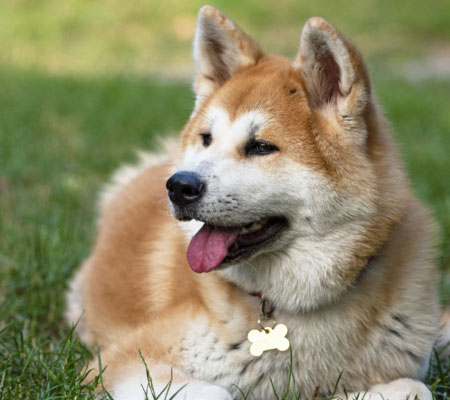Cantabrian Water Dogs are a landrace dog breed.
It was created as a fishing aid on the coast of Cantabria in northern Spain.
Perro de agua cantábrico, Perro de lanas, and Merlucero are some of the other
names for it.CWD and PAC are two popular nicknames for the breed. On March 22,
2011, the Breeds Committee of the Spanish Ministry of Environment categorised
and acknowledged it.The Cantabrian Water dog is an ancestral population in the
north of the Iberian Peninsula that appears to share Barbet's roots. The breed
is socially, culturally, and historically anchored across Cantabria's and
eastern Asturias' towns and villages.
This breed's work has traditionally been
associated with fishing: collecting fish that have fallen into the sea, keeping
an eye on ships while they are tied in port, carrying the rope between ships
and the pier, or working as a lifeguard.
Cantabrian Water Dog Highlights
Breed Size
Medium
Nature
Playful, Friendly
Energy Level
Active
Intelligence
High
Barking Level
When Necessary
Coat Length
Short
Breed Group
Working
Droll Amount
Low
Good with
Familes, Children, Dog
Feed Level
Medium, High
Colour Type
Cream, fawn, brown and white, and black and white
Other Facts
Easy to train, easy to groom, easy to walk, easy to kept at home, loyal for their owners.
Dog History
Because of its looks, the Cantabrian Water Dog is
also known as the wool dog. Their history is intrinsically related to that of
the fishermen who worked in little fishing ports throughout Spain's and the
Iberian Peninsula's coasts.
One of its closest genetic cousins is the Spanish
Water Dog, with which they have a striking resemblance in appearance.
Cantabrians, on the other hand, are smaller and shorter than their Spanish
counterparts.
The Cantabrian was primarily a working dog, doing
a variety of tasks in and around the port and fishing vessels. One of their
responsibilities, for example, was to retrieve fish that had spilled from the
fishermen's baskets. They were also reported to be skilled at locating shoals
of fish in shallow water and directing their masters' net placement.
They were also ratters, which played a vital role
in reducing the amount of vermin onboard the ship. Other skills included
grabbing the rope between the ship and the land to help in tying up alongside.
The Cantabrian's utility, however, did not end there. They also served as
watchdogs and occasionally as lifeguards, rescuing fisherman who had fallen
into the water.
Many of these jobs, however, had become obsolete
by the middle of the twentieth century. As modern technology supplanted the
Cantabrian, the population began to decline. Rather of being used as working
animals, they are now mostly kept as pets near the ports.
14-18 inch 18-25 kg 13-15 year
Height

Weight

Life Span
Health and Care
In general, Cantabrian Water Dogs are in good
health. However, they, like many other dog breeds, are prone to specific health
issues.
Hip dysplasia, allergies, glaucoma, PRA, and
hypothyroidism are among their most frequent health issues. Always strive to
remain in touch with a local veterinarian.
Caring
It is critical to take appropriate care of the
animals when growing Cantabrian Water dogs. They are excellent swimmers,
ratters, and watchdogs. They must also be active. They do not, however,
necessitate excessive activity. It's critical that it's kept active and
provided a way to express its mental sharpness.
The Cantabrian Water dog, like many other working
dogs, reacts well to an experienced dog owner. Reward-based training strategies
that encourage positive conduct are the most effective in motivating them.
Dog Breed Care Tips and
Important Instructions
Grooming is basic for the Cantabrian Water Dog.
Seasonal flea treatment is required, but a professional groomer is not required
to trim the dog's hair. To avoid infections, clean your ears and eyes on a
regular basis. If you don't have the time, talent, or money to care for a
high-maintenance dog, the Cantabrian Water Dog is one of the finest options.
Beginners will benefit much from this book.
Cantabrian Water Dogs have very little to no
shedding. You won't have to worry about your furniture or car being coated in
dog hair if you get a puppy from this breed. If you can't stand dog hair, a
Cantabrian Water Dog would be the finest option.
More frequently than the norm. The coats of these
dogs are longer, softer, and oilier than those of short-haired breeds. While a
nice wash now and again is a terrific way to keep your companion from getting
too stinky, be careful not to overdo it. Bathing will remove your dog's natural
oils, but a simple brushing once or twice a week should enough.
Other dog breeds are more sensitive than
Cantabrian Water Dogs. They are unresponsive to their owner's emotions and are
capable of light punishment. They are unconcerned with an ever-changing daily
schedule, a frantic household, young children, a noisy or workplace atmosphere,
or frequent visitor visits.
Feeding
2.5 to 3.5 cups of high-quality dog food each
day, split into two meals, is the recommended daily quantity. The amount of
food your adult dog consumes is determined by his size, age, build, metabolism,
and degree of activity. Dogs, like people, are unique individuals that require
different amounts of food.
Because the Spanish Water Dog is a medium-sized
dog, he requires 1.5 to 2 cups of dry food each day, split into two meals.
Fun Facts
- Cantabrian Water Dogs are extremely intelligent
dogs. In 15 to 25 repetitions, they grasp and recall new orders.
- Training Cantabrian Water Dogs is a breeze. They
quickly discover the link between orders and actions.
- The Cantabrian Water Dog is a breed that loves to
play. You'll know it's ready to play when you hear excited barking and nipping.
- Other dog breeds are more sensitive than
Cantabrian Water Dogs. They are unresponsive to their owner's emotions and are
capable of light punishment. They are unconcerned with an ever-changing daily
schedule, a frantic household, young children, a noisy or workplace atmosphere,
or frequent visitor visits.
- Cantabrian Water Dogs are devoted to their
owners, being loyal, kind, loving, and cuddly. Despite the activity, they like
spending personal time with their owners and are an excellent therapy dog for
people in need. Because they attach so deeply, this breed reacts significantly
to its handler's emotions. It is your happiness if they are happy.
Home Training Tips and General
Information
They are physically and intellectually powerful
dogs. It is recommended to begin training at a young age, especially for those
who show indications of fear, as this might escalate to hostility against
persons beyond their immediate area if left unchecked.
In order for your dog to retrieve successfully,
they must be able to recognise an object by name, go pick it up, take it back
to you, and place it at your feet. If your dog already understands how to
retrieve, the remaining two steps will be a breeze. If not, you'll have to show
them how to do it before moving on. Choose a favourite toy, one that your dog
really enjoys. Toss the thing a short distance away while your dog sits. They
should instantly tear after it; after all, it's what they were born to do.
Bring your dog back to you and reward them with a treat if they drop the ball
at your feet.
After that, you'll need to teach your dog the
names of numerous objects. Start with one thing at a time — a favourite toy is
typically the best choice. Use a random household object like a comb instead of
a toy if you fear a toy would thrill your furball so much that they won't be
able to take in any knowledge. Place the object in front of your dog's nose,
shake it around to gain their attention, and name it. Every time your dog
touches the object with their nose or takes it in their mouth, reward them with
a piece of food or a treat. Rep this process multiple times over the course of
a few days. After that, begin moving the object to other locations and then call
by their name.
If your dog already understands how to retrieve,
they should be familiar with the commands "come" and
"drop." To educate your dog to return stuff to you, use these
commands. Be patient, and only praise them when they get it properly; they may
drop the object before coming to you at first. This skill, on the other hand,
is ingrained into your Cantabrian's brain; learning to retrieve should take
them little time at all, compared to other breeds.
FAQS
|
Is it true that Cantabrian Water Dogs require a lot of attention? |
|
That depends on whether or not you're the appropriate kind of person.
He's a high-energy dog that requires plenty of mental and physical
stimulation. He also flourishes when he is in contact with other people. He's
all in if you're the energetic, outdoorsy sort who enjoys getting your blood
pounding. |
|
Is it possible to let the Cantabrian Water Dogs alone? |
|
It's possible it's the door." Even adult, well-trained Cantabrian
Water Dogs should be left alone for no more than six hours, according to her.
Working dogs are what they're called. They work, and you will as well: To
keep a water dog, according to Keppen, you don't need a lot of land, whether
it's waterfront or not. |
|
Is it better for dogs to drink cold or warm water? |
|
Canines with the lowest core body temperatures, on the other hand, were
more likely to consume warm water than other dogs (Figure 2). The findings of
this study reveal that dogs are selective in their drinking water
preferences, and that they, like humans, prefer chilly water. |
|
How often should I replace the water in my dog's bowl? |
|
Clean water should be available to pets at all times, and the water
should be changed at least once a day. Make sure your pet's bowl is full and
that it is filled with fresh water every day. It's also crucial that your
pet's water bowl be kept clean. |
Cantabrian Water Dog Unique Name
| Male Name | Female Name |
|---|---|
| Buzz | Amber |
| Captain | Anna |
| Clifford | Ashley |
| Dexter | Cinnamon |
| Diego | Delilah |
| Elmer | Duchess |
| Emmett | Emmy |
| Fritz | Gidget |
| Leo | Jackie |
| Leroy | Moxie |
| Peanut | Pebbles |
| Radar | Sasha |
| Remy | Sierra |
| Stewie | Smokey |
| Teddy | Sugar |
| Toby | Winnie |
| Comet | Bugsey |
| Banjo | Butterball |
| Tuesday | Chrissy |
| Volvo | Lightning |





